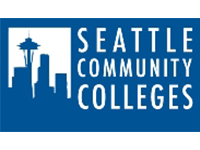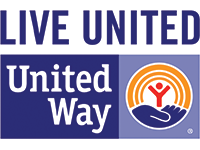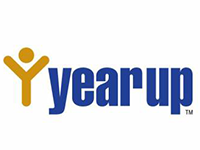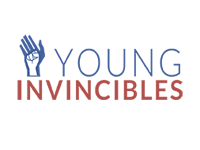The young and the disconnected: America’s youth unemployment problem
 •
•
Robert Samuels, Reporter
WASHINGTON, D.C. — The mentor and mentee sat in a room in the Latin American Youth Center, dreaming of a future neither knew how to fully attain.
“How many jobs do you think you’ve applied for?” Jaime Roberts, asked her mentee.
Manuel Hernandez laughed nervously. The question seemed so important, but the goal seemed so futile.
“I stopped counting,” Hernandez said. “Maybe 12? Maybe more?”
Hernandez is 24. He has never held a steady job, never went college and has a felony conviction. But he also has a budding artist as a son, who keeps asking for an art set that Dad can’t afford to buy.
The mistakes in his past have resulted in him being stuck in a national economic conundrum: how to help young people, between 16 and 24, who are neither enrolled in school nor employed. Policymakers call them “disconnected youth.” Hernandez calls them “friends.”
Even as America’s economy is in a slow, steady recovery, the number of young people considered to be “disconnected” from the economy or school system has hardly fallen, according the findings of a new analysis from the bipartisan nonprofit Opportunity Nation.
Over the past four years, the group has measured access to social mobility on a number of factors, including high school and pre-K enrollment, median wage and access to high-speed Internet. The group’s 2014 calculation, released last week, find that America’s seen a modest, but broad increase in opportunities for mobility. Overall, those opportunities have increased about 5 percent for Americans since 2011.
Meanwhile, the national high school graduation rate has hit a historic high and the overall unemployment rate has fallen to 6.3 percent. In July, according the Bureau of Labor Statistics, the overall youth unemployment rate was 14 percent, down from 16 percent the year before. But the number of so-called disconnected youth in the country has hardly budged at around 5.6 million.
Those problems mirror the steady climb of youth unemployment numbers globally, with the International Labor Organization citing a 12.6 percent unemployment rate for young people, near the crisis-era peak. In 2013, there were an estimated 73 million unemployed young people across the globe.
Big Washington recognizes the problem. Congress passed a new Workforce Innovation Act this summer that requires at least 75 percent of federal funds made available to state employment programs be directed toward helping disconnected youth.
Some economists have suggested young Americans have been victims of larger labor trends. As employment in middle-skill jobs has declined, young Americans are facing greater competition for jobs from less-skilled adults who were laid off from their previous jobs.
Research has also linked disconnected youth to poverty and crime. A 2012 analysis of the group for the White House Council for Community Solutions attributes 63 of youth crime to disconnected youth and cost taxpayers — in the most conservative estimates — nearly $14,000 a month, per young person.
“There are obvious risks if they don’t have access to the labor market,” said Kisha Bird, youth police director for the Center for Law and Social Policy. “And if they don’t have a liaison to help them get access, they will never get it.”
Hernandez is ready to change his life. It’s just that the job market won’t let him.
Small Washington — the local government — recognizes the youth employment problem as well. Also last week, the District opened a Youth ReEngagement Center to address the complex cocktail of problems many disconnected youth face. Some need to take the GED or get vocational training. Some need support with child care. Or bus fares to get to work.
Hernandez needs all of the above. He subsists on the daily $10 allowance given to him by his brother, most of which he saves to help support his 9-year-old son. At a time when Washington’s economy has been vivified by young newcomers with high-paying jobs, there still remain many young people such as Hernandez struggling to get by.
Since 2011, according to Opportunity Nation analysis, the city’s unemployment rate has gone down from 11.3 percent to 7.1 percent. Incomes have risen. But the number of youth who are neither working nor in school has remained at 17 percent. That’s 15,742 residents.
Hernandez comes off as unusually earnest for someone his age: soft-spoken, bespectacled, wearing a red Transformers T-shirt.
“I don’t like talking about the past,” he said, his eyes beginning to glaze. “I don’t want to go back there. That’s not who I am now.”
But the past can’t leave him. He grew up near Columbia Heights in a home so crowded he shared a bedroom with his mother and her sister. He lost his focus on academics at Lincoln Middle School and fell prey to aggressive gang recruitment. He joined a gang at 12. By 14, he dropped out. By 15, he had Manuel Hernandez III.
He needed money, so he began selling drugs. It was the most cash and the steadiest work he had. He liked landscaping, but the work was seasonal. He worked at bagel shops, sandwich shops, cleaned airplanes — and none of those jobs gave him enough money. When he decided to stop dealing drugs, he still thought he needed to carry a gun for protection. Police found it on him in 2012, and he was convicted for carrying a concealed weapon without a license.
“I didn’t want to use the gun,” Hernandez said. “It was all a misunderstanding. But I’ve given all that up.”
For those working with disconnected youth, Hernandez’s struggle does not strike them as as usual. By the time struggling young people want to reenter the formal economy, their problems have compounded. There are children to watch, bills to pay, beefs to quash.
Up until a decade ago, Bird said, it was easier for them to find service jobs. But now they compete against college graduates who can’t find professional work, or adults looking to support their family.
“I know it’s hard,” Hernandez said. “My cousin has a master’s degree and has to look for jobs on Craiglist. Just like me.”
Hernandez got a job working with a welder. He was fired; it continually interfered with appointments with his probation officer. He applied for a special program that teaches computer skills to low-income residents to help them work in IT.
Hernandez said he felt great about the chances. He went through three rounds of interviews. He tried to keep his chest up, his eyes straight, to stay engaged. None of that mattered.
“What did they call it, a ‘vigorous charge’ “? he asked Jaime.
“The felony,” she responded. He shook his head and tried to explain his decision-making process.
“I used to ask myself three times if I wanted to do something,” he said. “That wasn’t enough. I need to stay focused for my future, so now I ask four times.”
Last month, Roberts suggested another plan. A professor comes to the Youth Center twice a week to teach classes in art, philosophy and history. Those who complete the class get six college credits from Bard College in New York.
“This time, maybe it will help,” Hernandez said. “I’ve never been more focused. I need to do anything that can help me get a better future.”
“You’ve come a long way,” said Roberts, who has known him for five years.
Hernandez left his mentor behind and headed to the classroom. He pulled out his notebook, cracked open a can of Arizona iced tea. The professor began: “In this class, we will learn about American history in the inverse.”
He wrote the word on a white board. Someone in the class muttered, “Inverse. That means the opposite.”
Hernandez liked where that concept might lead. He asked himself four times if he thought this class might get him toward the path where feel he needs to be. Four times, the answer was yes.









